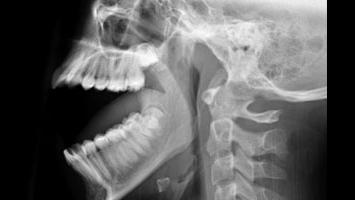Chiropractic Care for the TMJ and Jaw Pain
 I have seen some great results when working with patients who have Temporomandibular Joint (TMJ) symptoms including pain, popping, clicking, tenderness, tension, and difficulty chewing in and around the jaw area. I apply gentle adjustments to the joint itself and then work with the soft tissues that are involved with the TMJ. Two muscles responsible for motion of the jaw can be accessed superficially near the cheek and the temple at the side of the head. Two more sets of muscles can be accessed inside the mouth at the angle of the inner jaw. Using a gloved hand, I can apply pressure and motion to these muscles inside the patient’s mouth to release tension that is built up inside for great results.
I have seen some great results when working with patients who have Temporomandibular Joint (TMJ) symptoms including pain, popping, clicking, tenderness, tension, and difficulty chewing in and around the jaw area. I apply gentle adjustments to the joint itself and then work with the soft tissues that are involved with the TMJ. Two muscles responsible for motion of the jaw can be accessed superficially near the cheek and the temple at the side of the head. Two more sets of muscles can be accessed inside the mouth at the angle of the inner jaw. Using a gloved hand, I can apply pressure and motion to these muscles inside the patient’s mouth to release tension that is built up inside for great results.
It is common for people to posture and clench their jaw in times of increased stress. This can cause trigger points and adhesions in the muscles and really put a lot of extra pressure on the TMJ and even cause headaches. In times of stress, you can focus on deep abdominal breathing and specifically relax the jaw. Some simple exercises may help also including opening the jaw wide and closing. Then repeat these motions against the resistance of your hand to make it slightly more of a challenge.
Put your mouth through some resistance training.
Place your thumb underneath the center of your chin.
Open your mouth slowly by lowering your jaw, while applying steady light pressure to the bottom of your chin with your thumb.
Hold your mouth in the open position for 3 to 6 seconds, and then close your mouth slowly.
Repeat this exercise 3 to 6 times.
Exercise the joint in the opposite direction by providing resistance while closing your mouth.
Place your thumbs underneath your jaw and your index fingers on the joint of the jaw.
Push lightly with both your thumbs and your index fingers as you close your mouth.
Exercise your jaw with side-to-side movement.
Open your mouth and place an object that is less than 1/2-inch thick, such as a pencil or a popsicle stick, between your teeth.
Move your jaw slowly to one side, then the other.
Repeat this exercise several times, then choose a thicker object to place between your teeth when the exercise is no longer challenging.
Put the same item between your front teeth to exercise your jaw with a forward motion.
Slowly move your bottom jaw forward until your upper teeth are behind your lower teeth.
Repeat this exercise several times, again replacing the object with something thicker when the exercise seems too easy.
Other Tips:
- To reduce the pain and discomfort associated with TMJ eat soft foods and do not chew gum or bite your fingernails.
- Set your phone alarm to go off every hour to remind you to unclench and relax your jaw.
- Moist heat, such as a warm, damp washcloth applied to your jaw, is helpful for TMJ pain.
- Keep your tongue resting on the roof of your mouth with your teeth slightly apart. This helps you to relax a clenched jaw.

